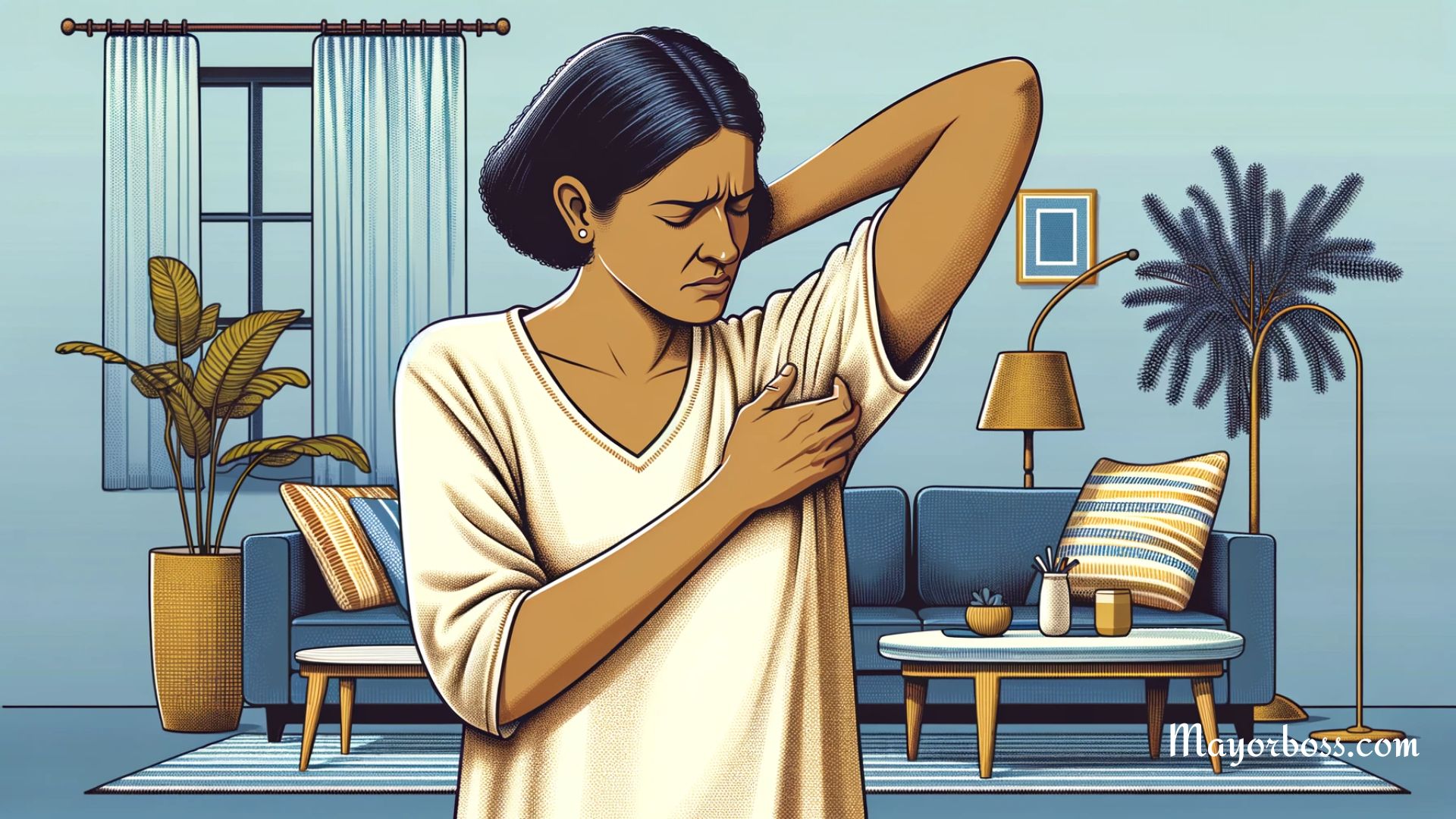What Causes Armpit Pain?
Armpit pain, medically known as axillary pain, is a common complaint affecting individuals of all ages and backgrounds. While it can be a nuisance, it’s often a sign of something more serious. This article delves into the various causes of armpit pain, ranging from minor irritations to underlying medical conditions, and explores treatment options and prevention strategies.
Common Causes of Armpit Pain

Muscle Strain
This is the most frequent cause of armpit pain. It can occur due to:
- Overexertion: Lifting heavy objects, vigorous exercise, or repetitive arm movements can strain the muscles in the armpit.
- Improper posture: Slouching or hunching can lead to muscle tension and pain in the armpit area.
- Trauma: A fall, blow, or other injury to the armpit can cause muscle tears and pain.
Swollen Lymph Nodes
The armpit contains lymph nodes, part of the immune system that filters out toxins and infections. When the body fights an infection, these nodes can become swollen and tender, causing armpit pain.
Common causes of swollen lymph nodes include:
- Upper respiratory infections: Colds, flu, and other viral or bacterial infections can cause lymph nodes to swell.
- Skin infections: Infections on the arm, hand, or chest can spread to the lymph nodes in the armpit.
- Mononucleosis: This viral infection typically causes swollen lymph nodes in the neck and armpits.
- Autoimmune diseases: Ailments like lupus and rheumatoid arthritis can cause inflammation of the lymph nodes, leading to armpit pain.
Skin Conditions
Several skin conditions can cause armpit pain, including:
- Ingrown hairs: Shaving or using depilatory creams can lead to ingrown hairs, which become inflamed and painful.
- Dermatitis: Skin irritation caused by deodorant, antiperspirants, clothing fabrics, or allergens can manifest as armpit pain, redness, and itching.
- Intertrigo: This condition occurs when skin rubs together, causing irritation and pain, particularly in areas prone to sweating, like the armpits.
- Shingles: This viral infection can affect the nerves in the armpit area, causing pain, burning, and a rash.
Nerve Compression
Nerves running through your armpit can become compressed, causing pain. This might occur due to injury, repetitive motions, or even poor posture.
Other Causes
While less common, other potential causes of armpit pain include:
- Breast cancer: In some cases, breast cancer can spread to the lymph nodes in the armpit, causing pain and swelling.
- Lymphoma: This cancer affects the lymphatic system and can cause armpit pain as a symptom.
- Heart disease: Although rare, in some cases, referred pain from heart conditions like angina can manifest as armpit pain.
Symptoms Associated with Armpit Pain
The symptoms associated with armpit pain can vary depending on the underlying cause. However, some common symptoms include:
- Sharp, dull, or throbbing pain in one or both armpits
- Swelling or tenderness in the armpit
- Lumps or bumps in the armpit
- Redness, itching, or irritation in the armpit
- Difficulty moving the arm
- Fever or chills
- Fatigue
When to See a Doctor
While it’s common to experience armpit pain occasionally, seeking medical attention is crucial if:
- The pain is severe or persistent.
- It is accompanied by other symptoms like fever, chills, fatigue, or weight loss.
- You notice a lump or swelling in the armpit.
- The skin becomes red, swollen, or tender.
- The pain worsens over time or doesn’t improve with home remedies.
Diagnosis of Armpit Pain
To diagnose the cause of your armpit pain, your doctor will likely:
- Perform a physical examination of your armpit, including checking for swelling, tenderness, and lumps
- Ask about your medical history and symptoms
- Order additional tests, such as blood tests, imaging tests (ultrasound, X-ray, or MRI), or biopsies.
Treatment
Treatment for armpit pain depends on the underlying cause. Common treatment options include:
- Over-the-counter pain relievers: Medications like ibuprofen or acetaminophen can help relieve pain and inflammation.
- Rest: Avoiding activities that strain the muscles in the armpit can help promote healing.
- Warm compresses: Applying warm compresses to the affected area can help reduce pain and swelling.
- Ice packs: Ice packs can be applied for short periods to reduce inflammation.
- Antibiotics: Antibiotics may be prescribed if a bacterial infection causes the pain.
- Antiviral medications: For viral infections causing swollen lymph nodes, antiviral medications may be necessary.
- Topical creams: Corticosteroid creams can help relieve itching and inflammation caused by skin conditions.
- Surgery: In rare cases, surgery may be needed to remove enlarged lymph nodes or treat underlying medical conditions.
Prevention Tips
Several measures can help prevent armpit pain, including:
- Maintaining good posture: Avoiding slouching and hunching can reduce muscle strain in the armpit area.
- Practicing good hygiene: Regular showering and washing the armpits can help prevent skin irritation and infections.
- Choosing the right deodorant or antiperspirant: Opt for fragrance-free products designed for sensitive skin to minimize the risk of irritation.
- Shaving properly: Use sharp blades and shaving cream to prevent ingrown hairs.
- Wear loose-fitting clothing: To prevent skin irritation.
- Stay up-to-date on vaccinations: To prevent infections that can cause swollen lymph nodes.
